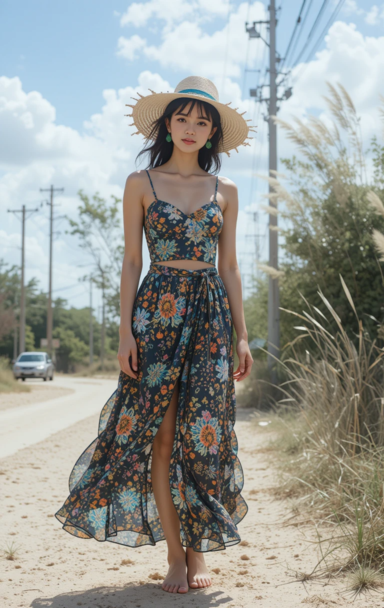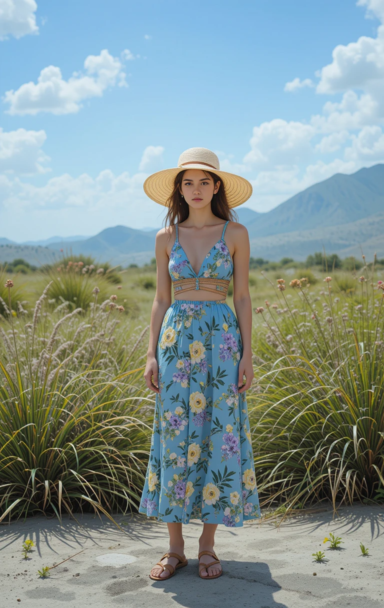Introduction
As global temperatures continue to rise due to climate change, summer fashion is undergoing a fundamental transformation. Traditional summer wardrobes, once built around aesthetics and fleeting trends, are now being redefined by functionality, sustainability, and adaptability. From high-tech fabrics that regulate body temperature to minimalist designs that promote breathability, designers and consumers alike are reconsidering how to dress for an increasingly hotter world.
This article explores how climate change is reshaping summer wardrobes, examining the innovations in fabric technology, the rise of sustainable fashion, and the shift in design philosophy that prioritizes comfort, protection, and environmental consciousness.

The Impact of Climate Change on Fashion Choices
Rising Temperatures and Changing Weather Patterns
Heatwaves are becoming more frequent and intense, forcing people to rethink their clothing choices. Lightweight and breathable fabrics are no longer just a preference but a necessity. Additionally, unpredictable weather conditions, including sudden storms and humidity spikes, have led to an increased demand for versatile and adaptable clothing.

Health and Comfort Considerations
Excessive heat can cause heat exhaustion, dehydration, and skin damage. As a result, summer fashion is now designed to offer better UV protection, moisture-wicking properties, and ventilation. Consumers are looking for clothing that helps them stay cool without compromising on style.
Innovations in Fabric Technology
Moisture-Wicking and Breathable Fabrics
Technical fabrics such as Tencel, bamboo fiber, and organic cotton are gaining popularity due to their ability to wick away sweat and allow airflow. Sportswear brands have pioneered the development of high-performance fabrics that keep wearers cool even in extreme heat.

UV-Protective Clothing
Sun-protective clothing is no longer limited to sportswear. Many fashion brands are integrating UPF (Ultraviolet Protection Factor) materials into everyday summer wear, reducing the risk of sunburn and long-term skin damage. Wide-brimmed hats, long-sleeved linen shirts, and lightweight cover-ups are now being designed with built-in sun protection.
Heat-Responsive Smart Textiles
Innovations in textile technology are leading to the development of smart fabrics that adapt to temperature changes. Some garments now feature phase-change materials (PCMs) that absorb and release heat, helping the wearer maintain a comfortable body temperature.

The Rise of Sustainable Summer Fashion
Eco-Friendly and Biodegradable Materials
With the fashion industry being one of the largest contributors to environmental pollution, sustainable summer fashion is becoming a priority. Brands are investing in biodegradable materials such as hemp, linen, and organic silk, which require less water and fewer pesticides compared to conventional fabrics.

Slow Fashion and Timeless Designs
Fast fashion’s cycle of constant consumption is being challenged by the slow fashion movement, which promotes durable, timeless pieces. Capsule summer wardrobes featuring versatile, high-quality garments are gaining popularity as consumers seek to reduce waste and make ethical fashion choices.
Upcycled and Recycled Fashion

Recycled fabrics made from ocean plastic, discarded garments, and repurposed textiles are becoming more mainstream. Brands like Patagonia and Stella McCartney are leading the way in creating stylish summer clothing from waste materials, proving that sustainability and fashion can coexist.
The Aesthetic Shift: Style Meets Functionality
Minimalist and Loose-Fitting Designs
Skin-tight summer wear is being replaced by loose, flowing silhouettes that allow for better air circulation. Oversized shirts, wide-leg pants, and maxi dresses are trending as they offer both comfort and elegance.

Lighter Color Palettes
Dark colors absorb more heat, making them less practical in extreme temperatures. As a result, pastel hues, whites, and earthy tones are dominating summer collections, reflecting sunlight and keeping wearers cooler.
Functional Accessories
Accessories are also adapting to rising temperatures. Breathable sun hats, UV-blocking sunglasses, and lightweight scarves that provide sun protection without trapping heat are becoming essential summer staples.

The Influence of Cultural and Regional Adaptations
Traditional Clothing as a Model for Heat-Resistant Fashion
Many cultures have long embraced clothing designed for hot climates. For example, Middle Eastern kaftans, Indian cotton saris, and African dashikis are all designed to maximize airflow while protecting the body from the sun. Fashion designers are drawing inspiration from these traditional garments to create modern heat-resistant clothing.

Workwear and Professional Attire Adaptations
Office dress codes are evolving to accommodate extreme heat. Lightweight suiting, short-sleeve blouses, and breathable footwear options are becoming more acceptable in professional settings as companies recognize the need for climate-conscious workwear.

Future Trends in Summer Fashion
The Role of Technology in Climate-Adaptive Fashion
As climate conditions continue to change, we can expect to see further innovations in wearable technology. Smart textiles that cool the body, clothing with built-in air circulation, and water-resistant yet breathable fabrics will likely become more widespread.
Climate-Conscious Consumer Behavior
Consumers are becoming more mindful of their purchases, prioritizing quality over quantity. This shift is expected to drive demand for ethical brands, rental fashion services, and second-hand shopping as people seek climate-conscious ways to dress for the summer.

Conclusion
The concept of summer fashion is being redefined by climate change, pushing the industry toward innovation, sustainability, and functionality. As heatwaves become more intense, designers are focusing on breathable fabrics, UV protection, and eco-friendly materials to create clothing that meets the challenges of rising temperatures.
From the growing influence of slow fashion to advancements in textile technology, the future of summer wardrobes will be shaped by the intersection of style and climate adaptability. By embracing sustainable choices and prioritizing comfort, consumers can stay cool while contributing to a more responsible fashion industry.



